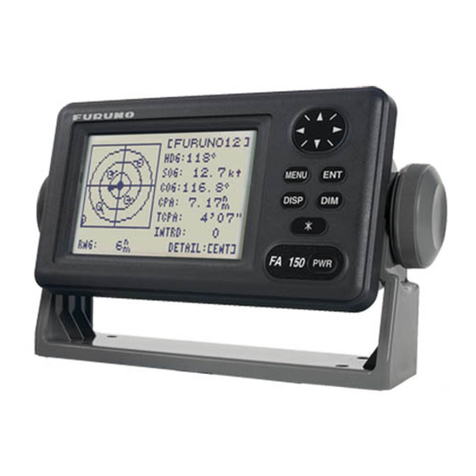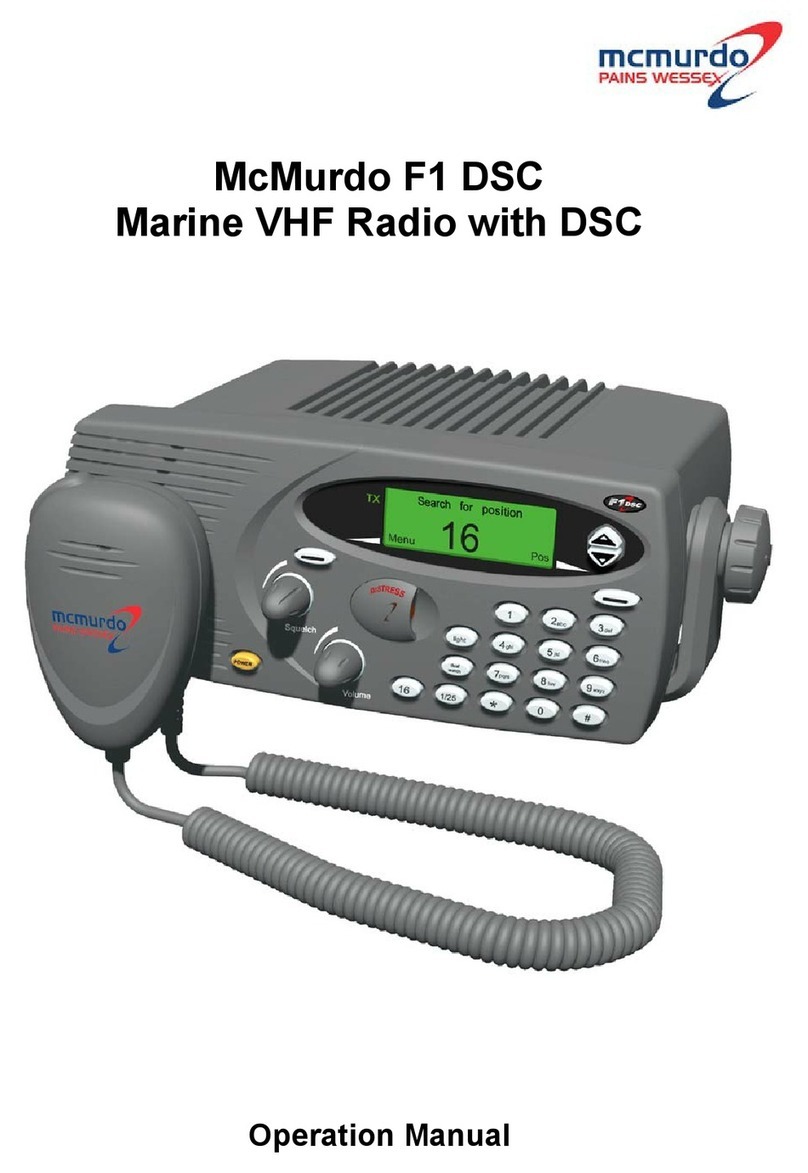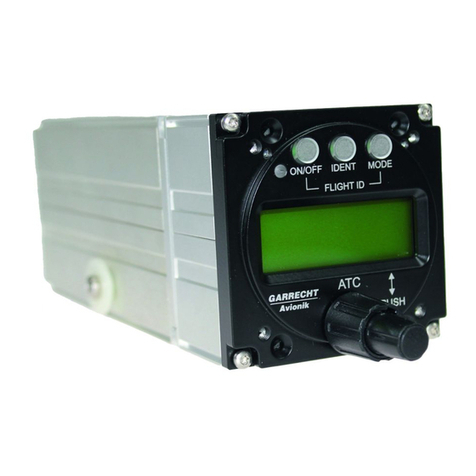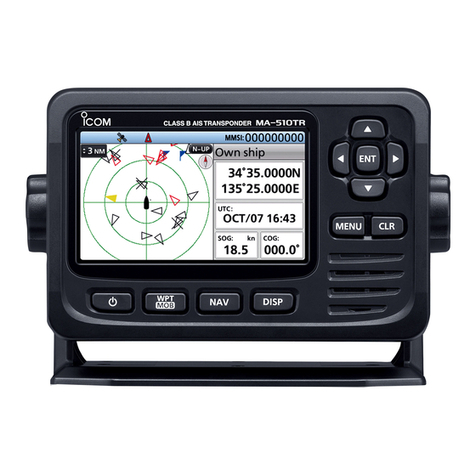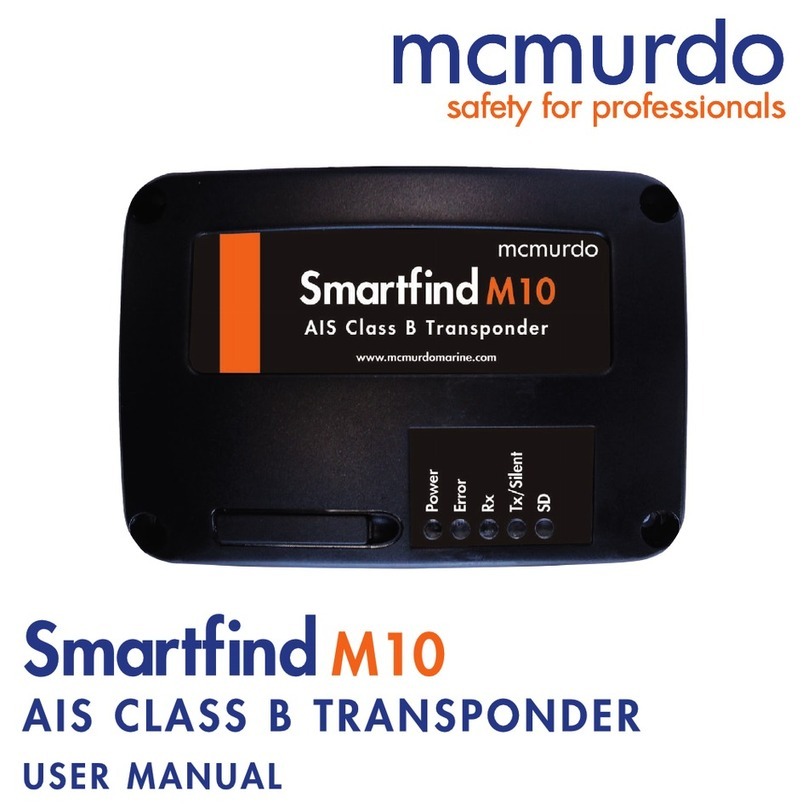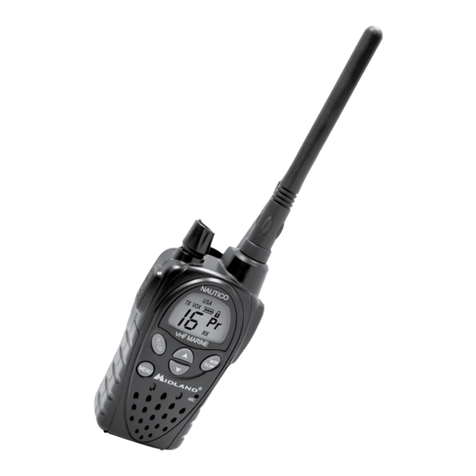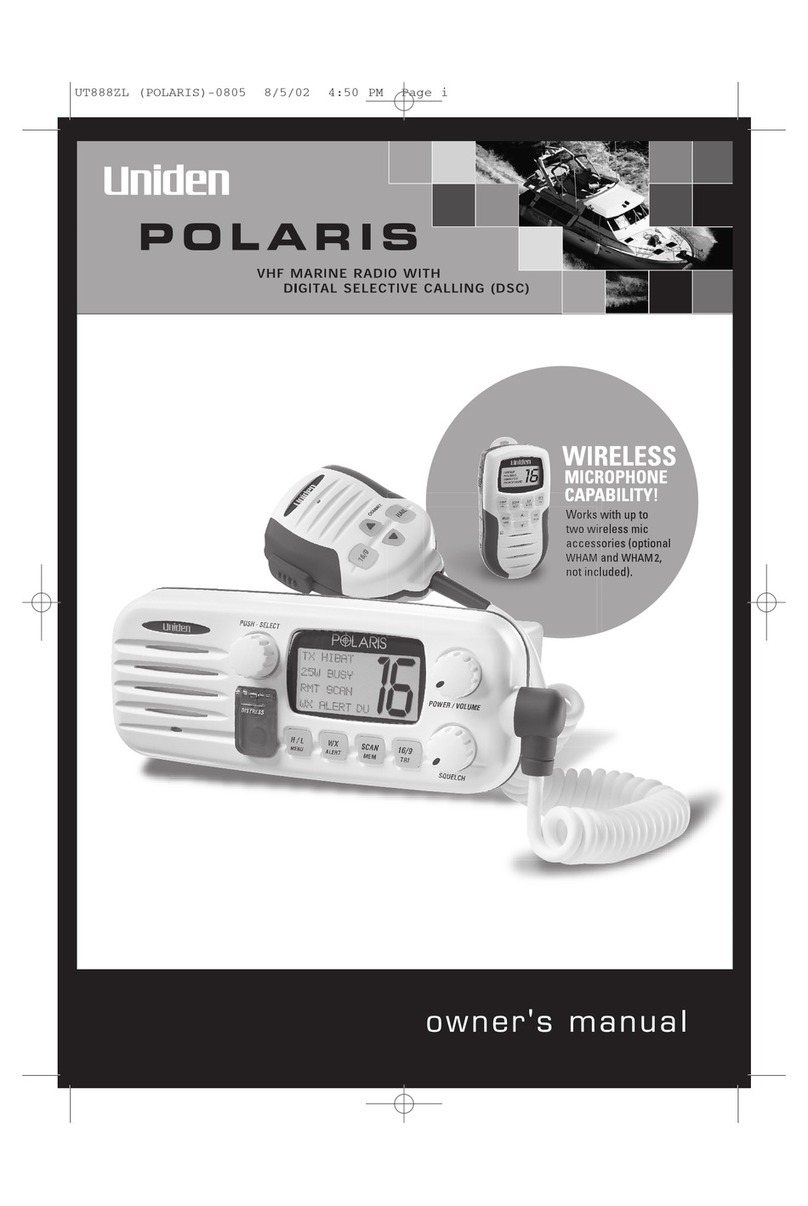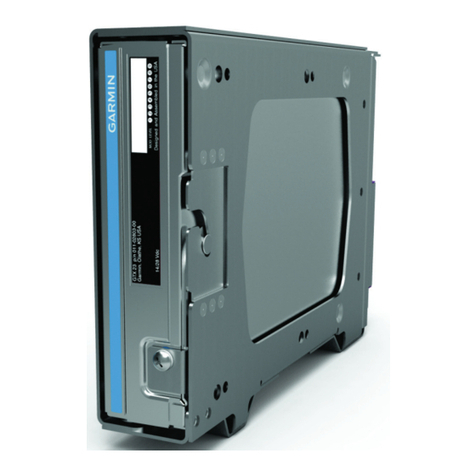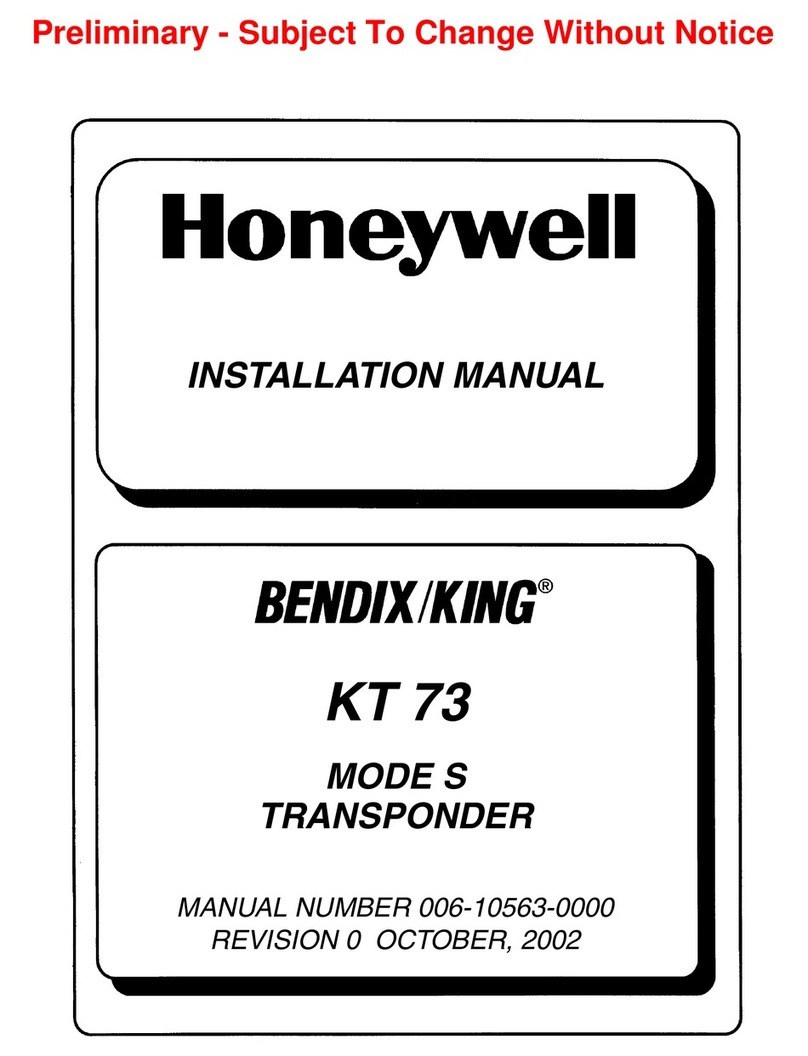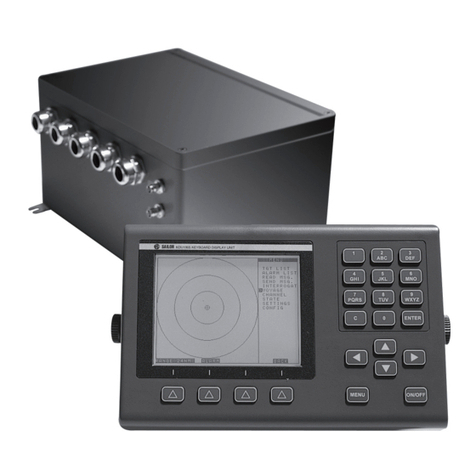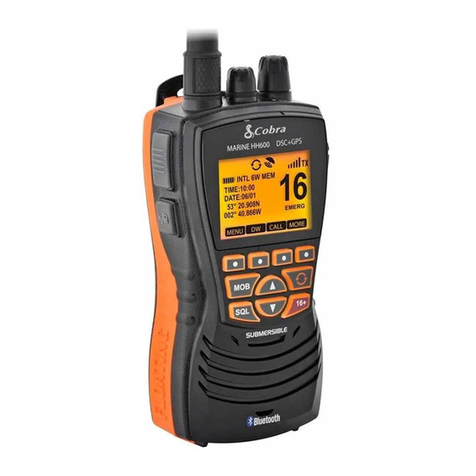Benthos 865-A Programming manual

fffff
INSTRUCTIONS FOR THE INSTALLATION,
OPERATION AND MAINTENANCE OF THE
BENTHOS MODEL 865-A DEEP SEA
ACOUSTIC RELEASE TRANSPONDER
M-855-009 Rev. B


INSTRUCTIONS FOR THE INSTALLATION,
OPERATION AND MAINTENANCE OF THE
BENTHOS MODEL 865-A DEEP SEA
ACOUSTIC RELEASE TRANSPONDER
M-855-009 Rev. B
March 28,2001
(For Units With Microprocessor Based Board Set A-855-179)
Benthos, Inc.
49 Edgerton Drive, North Falmouth, Massachusetts 02556 U.S.A.
Telephone: 1-508-563-1000 / 1-800-446-1222
Fax: 1-508-563-6444
www.benthos.com


Model 865-A Deep Sea Acoustic Release/Transponder M-855-009
Benthos, Inc.
i
TABLE OF CONTENTS
Section Title Page
1.0 INTRODUCTION................................................................................................1
2.0 GENERAL DESCRIPTION................................................................................4
2.1 Construction............................................................................................................4
3.0 SPECIFICATIONS...............................................................................................8
3.1 Electrical..................................................................................................................8
3.1.1 Power Source..........................................................................................................8
3.1.1.1 Standard Battery Pack.............................................................................................8
3.1.2 Operating Life..........................................................................................................8
3.1.2.1 Standard Battery Pack.............................................................................................8
3.1.3 Acoustic Output.......................................................................................................8
3.1.4 Receive Frequency...................................................................................................8
3.1.5 Transmit Frequency..................................................................................................8
3.1.6 Transmit Pulse Width...............................................................................................8
3.1.7 Command Channels .................................................................................................8
3.1.8 Release Indication....................................................................................................9
3.1.9 Slant Range..............................................................................................................9
3.1.10 Enable Time.............................................................................................................9
3.1.11 Minimum Detectable Signal......................................................................................9
3.1.13 Turnaround Delay....................................................................................................9
3.1.14 Detection Jitter (or Repeatability)..............................................................................9
3.1.15 Receive Lockout Time .............................................................................................9
3.1.16 Tilt Switch..............................................................................................................10
3.1.17 Backup Timer........................................................................................................10
3.2 Mechanical............................................................................................................10
3.2.1 Load Capacity.......................................................................................................10
3.2.2 Depth Rating..........................................................................................................10
3.2.3 Dimensions ............................................................................................................10
3.2.4 Weight...................................................................................................................10
3.2.5 Accessories ...........................................................................................................10
4.0 OPERATIONAL USE........................................................................................11
4.1 The Switch.............................................................................................................11
4.2 Testing...................................................................................................................11
4.2.1 Power On..............................................................................................................11
4.2.2 Single Transpond ...................................................................................................11
4.2.3 Command Enable...................................................................................................13
4.2.4 Command Release.................................................................................................14
4.3 Deployment ...........................................................................................................15

Model 865-A Deep Sea Acoustic Release/Transponder M-855-009
Benthos, Inc.
ii
4.4 Recovery...............................................................................................................15
5.0 HARDWARE DESCRIPTION..........................................................................16
5.1 Mechanical Parts....................................................................................................16
5.1.1 Housing .................................................................................................................16
5.1.2 End Cap Assembly ................................................................................................16
5.2 Electrical Parts.......................................................................................................18
5.2.1 Battery Packs ........................................................................................................18
5.2.2 Electronics Chassis Assembly.................................................................................18
5.2.2.1 865-A Board No. 1...............................................................................................18
5.2.2.2 865-A Board No. 2...............................................................................................21
6.0 THEORY OF OPERATION ..............................................................................21
6.1 Receiver ................................................................................................................21
6.2 Command Theory..................................................................................................22
6.2.1 Command Release.................................................................................................22
6.3 Transmitter.............................................................................................................22
6.3.2 Backup Timer Feature............................................................................................23
6.4 Tilt Theory.............................................................................................................24
7.0 CHANGING THE RELEASE SETUP..............................................................24
7.1 Changing The Command Assignments ....................................................................25
7.2 Changing The Transmit Frequency..........................................................................25
7.3 Changing The Enable Time .....................................................................................26
7.4 Changing the Backup Timer....................................................................................26
7.5 Enabling And Disabling The Tilt Function (on initial power up).................................26
8.0 MAINTENANCE...............................................................................................27
8.1 Step-by-Step Turnaround Procedure for the 865-A................................................27
8.2 865-A Turnaround Checklist..................................................................................32
8.3 Preventative ...........................................................................................................33
8.4 Replacing the Sealing Rings ....................................................................................33
8.4.1 End Cap to Housing Seals......................................................................................33
8.4.2 End Cap Rotary Switch Shaft Seals........................................................................33
8.4.3 Release Pin Seals ...................................................................................................34
8.5 Battery Pack Replacement .....................................................................................35
9.0 TROUBLESHOOTING.....................................................................................35
10.0 DRAWINGS AND SPARE PARTS LISTS......................................................37
APPENDICES
Application Note 210-003, Alkaline Batteries

Model 865-A Deep Sea Acoustic Release/Transponder M-855-009
Benthos, Inc.
iii
Application Note 500-001, Minimum Detectable Signal of Underwater Transponders
Application Note 865-001, 865-A Acoustic Release, Definition of Load Ratings

Model 865-A Deep Sea Acoustic Release/Transponder M-855-009
Benthos, Inc.
iv
LIST OF FIGURES
Figure 1-1Outline Drawing ......................................................................................................2
Figure 1-2Typical Acoustic Release Application.....................................................................3
Figure 2-1Exploded View of 865-A Release............................................................................5
Figure 2-2DS-7000 Acoustic Deck Set....................................................................................6
Figure 4-1Actuation and Test Switch, shown in the HOLD-EXTEND position....................11
Figure 4-2Transducer Configuration for Command Test in Air............................................13
Figure 5-1Release Switching System.....................................................................................17
Figure 5-2Board No. 1 Top View..........................................................................................18
Figure 5-3Board No. 2 Top View..........................................................................................18
Figure 7-1Setup Opening Screen...........................................................................................23
Figure 8-1Removal of Chassis ...............................................................................................25
Figure 8-2Connector Installation...........................................................................................26
Figure 8-3Battery Pack Connector P.C. Board.....................................................................26

Model 865-A Deep Sea Acoustic Release/Transponder M-855-009
Benthos, Inc.
1
1.0 INTRODUCTION
This manual describes the use and operation of the standard Model 865-A Deep Sea Acoustic
Release/Transponder, that have the microprocessor based board set, A-855-170. The unit, shown in
figure 1.1 Outline Drawing, is designed for long range, heavy duty, deep or shallow water applications.
It can support a load of 10,000 pounds (4540 Kg) and is tested to a simulated depth of 12,000 meters
prior to leaving the factory. It is primarily intended to be used as the release link for the recovery and
relocation of moored instrument arrays (see Figure 1-2). For ease of location and measurement of slant
range, the unit will transpond when interrogated at a predetermined frequency.
Upon recovery, the release can be easily and externally recocked for repetitive deployment. The
standard battery pack will easily provide 2 years use, with many releases and a minimum of 250,000
transponds.
Interrogations and commands are transmitted by the Model DS-7000 Deck Unit, which also provides a
four-digit readout of slant range up to 10,000 meters. The deck unit provides seventeen different
interrogate frequencies and eight different command codes per receiver frequency, so that location and
ranging can be carried out on many deployed Release/Transponders without interaction. The Model
DS-7000 Deck Unit has its own manual and is not described in detail here.
Upon completion of a RELEASE command, the 865-A will change its transponder reply from one to
five pings for every interrogate pulse from the deck unit. At the deck unit the verification that the
RELEASE command has been received and acted upon is seen as a series of flashes from the receiver
LED when the proper receive frequency is selected. The 865-A reverts to a single ping when the unit is
recocked.
In order to ensure the maximum battery life of the 865-A, there is an integral transpond enable/disable
feature. After a predetermined time, the transpond capability is automatically disabled. This prevents
unintended pings, which would waste energy. By sending an ENABLE command the timer is reset and
the release will again reply when interrogated.

Model 865-A Deep Sea Acoustic Release/Transponder M-855-009
Benthos, Inc.
2
F
igure 1
-
1

Model 865-A Deep Sea Acoustic Release/Transponder M-855-009
Benthos, Inc.
3
MOORING
RELEASE
DEEP SEA
BENTHOS
ARRAY
INSTRUMENT
PACKAGE
BUOYANCY
Typical Acoustic Release Application
Figure 1-2

Model 865-A Deep Sea Acoustic Release/Transponder M-855-009
Benthos, Inc.
4
2.0 GENERAL DESCRIPTION
The Model 865-A Acoustic Release is supplied to the customer as follows. The customer should
check the shipment upon receipt to be sure the order is received complete and undamaged. Please
contact Benthos before returning any equipment damaged in shipment.
a. Model 865-A Acoustic Release/Transponder unit
b. Model 865-SL (Spare Link)
c. Spare Parts Kit 865-A-SPK (see Section 9)
d. Instruction Manual.
2.1 Construction (see Figure 2–1)
The Model 865-A consists of a transducer, electronics assembly, power pack and release assembly,
contained in a stainless steel housing.
The electronics, battery and release assembly can be withdrawn as one assembly by simply removing
the two stainless steel nuts and pulling on the end cap. The internal connection to the transducer at the
other end is automatically broken when the assembly is withdrawn, and remade when the assembly is
inserted.
When withdrawn, it can be seen that the release mechanism takes up about one third of the assembly,
the electronics and battery, the remainder. The electronics/battery section can be separated from the
release mechanism by removal of two No. 10-32 stainless steel nuts found on the opposite side of the
release mechanism mounting plate.
The electronics are protected by the short aluminum tube nearest the transducer connector. The circuit
boards may be exposed by simply removing two 1/4-20 flathead screws on the end plate, removing the
plate and sliding off the tube (see Figure 2-1).
There are two circuit boards back to back, separated by four spacers and a connector. They are:
a. 865 Board No. 1, Driver Board, C-855-130 (with largest components)
b. 865 Board No. 2, Logic Board, C-855-132.
The stainless steel housing consists of the tubing, a mooring eye, protective rails for the transducer, two
padeyes for attachment of other equipment and an end cap for the release mechanism. A 1018 carbon
steel sacrificial anode is mounted to the housing for corrosion protection (reference Drawing B-855-81,
Instructions for Anode Installation). Most of the external surface of the housing is painted to reduce the
exposed surface area.
NOTE:Minor scrapes or chips in the paint are not a problem as long as the anodes are properly
installed.

Model 865-A Deep Sea Acoustic Release/Transponder M-855-009
Benthos, Inc.
5
NOTE:Older units with unpainted housings still require sacrificial anodes on each handle for sufficient
protection. Request 865-A Anode Kit 865-SA-K2 for units with unpainted housings.

Model 865-A Deep Sea Acoustic Release/Transponder M-855-009
Benthos, Inc.
6
BATTERY
CONNECTOR
COVER PLATE
ASSEMBLY TUBE
CONNECTOR
(FEMALE)
CHASSIS BATTERY
PACK (MALE)
CHASSIS
END CAP
BENTHOS
BATTERY PACK
HOUSING
NO. 2 PLATE
TUBE
CONNECTOR
(FEMALE)
TRANSDUCER
NO. 1
P.C. BOARD
TRANSDUCER CONNECTOR (MALE)
DELRIN BUSHING
ELECTRONICSP.C. BOARD
TRANSDUCER
END
ANODE
Exploded View of 865-A Release
Figure 2-1

Model 865-A Deep Sea Acoustic Release/Transponder M-855-009
Benthos, Inc.
7
DS-7000 Acoustic Deck Set
Figure 2-2

Model 865-A Deep Sea Acoustic Release/Transponder M-855-009
Benthos, Inc.
8
3.0 SPECIFICATIONS
3.1 Electrical
3.1.1 Power Source
3.1.1.1 Standard Battery Pack
18 alkaline 'D' cells to provide two strings at a nominal 13.5 volts (Benthos P/N 865-SB-13).
Capacity: 22 Amp-hours (de-rated for cold temperature use and two year deployment time)
3.1.2 Operating Life
3.1.2.1 Standard Battery Pack
Release after 2 years and 250,000 transponds.
3.1.3 Acoustic Output
Greater than 192 dB re 1 micropascal at 1 meter from 9.0 to 16.0 kHz.
Greater than 185 dB from 7.5 to 8.5 kHz.
3.1.4 Receive Frequency
The receiver frequency is factory set to any one frequency between 7.0 kHz and 15.0 kHz in 500 Hz
increments (12.5 Khz is reserved and not used as a standard receive frequency). The receiver
bandwidth is ± 125 Hz.
All of the above frequencies are transmitted as standard by the DS-7000 deck unit.
3.1.5 Transmit Frequency
User selectable 7.5 to 17.0 kHz in 250 Hz increments.
3.1.6 Transmit Pulse Width
10 ms ±1 ms.
3.1.7 Command Channels

Model 865-A Deep Sea Acoustic Release/Transponder M-855-009
Benthos, Inc.
9
Eight standard channels (A,B,C,D,E,F,G or H) are available from the deck unit which, in combination
with the receive frequencies, provide 128 different codes of non-interfering operation.
NOTE: The enable feature and the release feature require one command code each.
3.1.8 Release Indication
a. Before releasing, unit will reply with one ping when interrogated.
b. Immediately upon releasing, unit will automatically transmit four pings with 200 millisecond spacing.
c. After releasing, unit will reply with five pings when interrogated, again separated by 200 milliseconds.
3.1.9 Slant Range
Up to 10 km when used with the Model DS-7000 Deck Unit.
3.1.10 Enable Time
Selectable up to 255 hours, normally shipped set to 12 hours. If “0” hours is selected, the unit will
remain enabled permanently.
3.1.11 Beam Pattern
Essentially omnidirectional in the upper hemisphere.
3.1.12 Minimum Detectable Signal
Less than 85 dB re 1 micropascal.
3.1.13 Turnaround Delay
3 ms, standard (3-30 ms, optional).
3.1.14 Detection Jitter (or Repeatability)
±.1 milliseconds.
3.1.15 Receive Lockout Time
1.5 seconds, re-triggerable.

Model 865-A Deep Sea Acoustic Release/Transponder M-855-009
Benthos, Inc.
10
3.1.16 Tilt Switch
If selected, unit will respond to an interrogation with the normal respond ping, plus four additional pings
200 milliseconds apart, when the release is tilted more than 25 degrees from vertical.
3.1.17 Backup Timer
Note: As standard, this feature is NOT included in the release software. If requested, at
the time of order, the backup timer will be included, and operates as described in this
manual.
If enabled, the BACKUP timer will cause the 865 to automatically RELEASE a fixed number of hours
(up to 65,535 hours , > 7 years!) after the unit is turned on. This feature can be used in the very special
applications where a timed release function is desired. When this function is enabled, the unit will still
respond to an acoustically transmitted RELEASE command.
WARNING: EXERCISE EXTREME CAUTION WHEN USING THE
BACKUP TIMER FUNCTION.
3.2 Mechanical
3.2.1 Load Capacity
10,000 pounds (4540 Kg). Please refer to Application Note #865-001 in the Appendix.
3.2.2 Depth Rating
12,000 meters (39,370 feet). All units tested for acoustic actuation under pressure and load.
3.2.3 Dimensions
Refer to Figure 1.1, Outline Drawing.
3.2.4Weight
Refer to Figure 1.1, Outline Drawing.
3.2.5 Accessories

Model 865-A Deep Sea Acoustic Release/Transponder M-855-009
Benthos, Inc.
11
n865-SL Spare Link (supplied)
n865-A-SPK Spare Parts Kit (supplied)
nModel DS-7000 Deck Unit
n865-SB-13 Spare Battery Pack
n865-SA-K1 Spare Anode Kit.
4.0 OPERATIONAL USE
4.1 The Switch
A rotary switch is mounted in the release end cap (see Figure 4-1). An engraved arrowhead marks the
switch position. There are three positions:
a. HOLD-EXTEND. Here the 865-A is OFF. When switched to this position, the pin will extend
if it is not already extended. Store the unit with the switch in this position.
IMPORTANT: When switching to HOLD-EXTEND, be sure that the lever is off
to one side so that the pin will not jam into the end of the lever. If this does
happen, the fuse will blow.
b. ON-ARMED. Here the 865-A is ON. This is the position the switch MUSTbe in when the unit
is deployed. The 865-A will ping four times to let you know it has powered-up successfully.
c. TEST-RETRACT. Here the 865-A is ON and the pin will retract. Use this position when
reloading an expendable link. Note that a four-ping burst occurs when the pin is fully retracted.
4.2 Testing
It is always a good idea to test any instrument on deck prior to deployment. To test the 865-A, simply
follow these steps:
4.2.1 Power On
Using a coin or screwdriver, turn the switch to the ON-ARMED position. The release will signal to you
that it has powered up successfully by transmitting four pings.
4.2.2 Single Transpond
a. Place your deck unit transducer near the 865-A transducer. Set the TRANSMIT
FREQUENCY (Tx) to the receive frequency of the 865-A and the RECEIVE FREQUENCY

Model 865-A Deep Sea Acoustic Release/Transponder M-855-009
Benthos, Inc.
12
(Rx) to the transmit frequency of the 865-A. The receive and transmit frequencies are written on
the external label of the 865-A.
b. Send a single transpond from the deck unit. The release should reply once simultaneously. Place
your finger on the transducer and you will be able to actually feel the transmission.
Actuation and Test Switch, shown in the HOLD-EXTEND position
Figure 4-1
Table of contents
Popular Marine Radio manuals by other brands
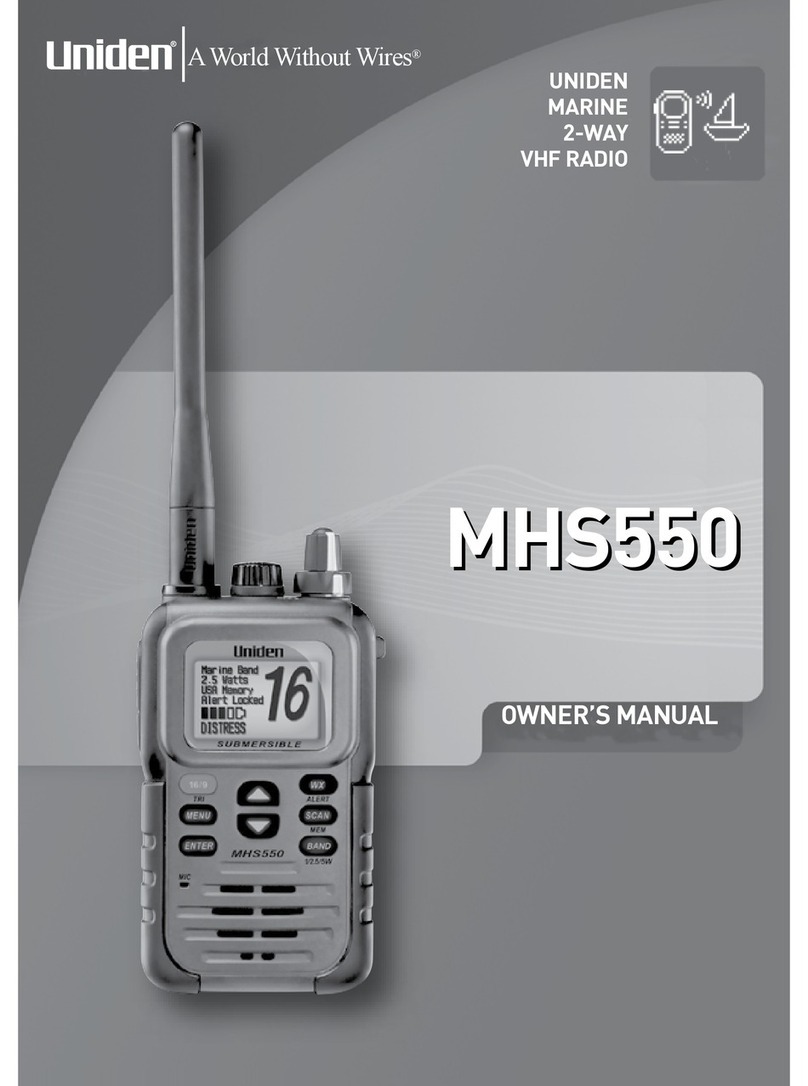
Uniden
Uniden MHS550 owner's manual
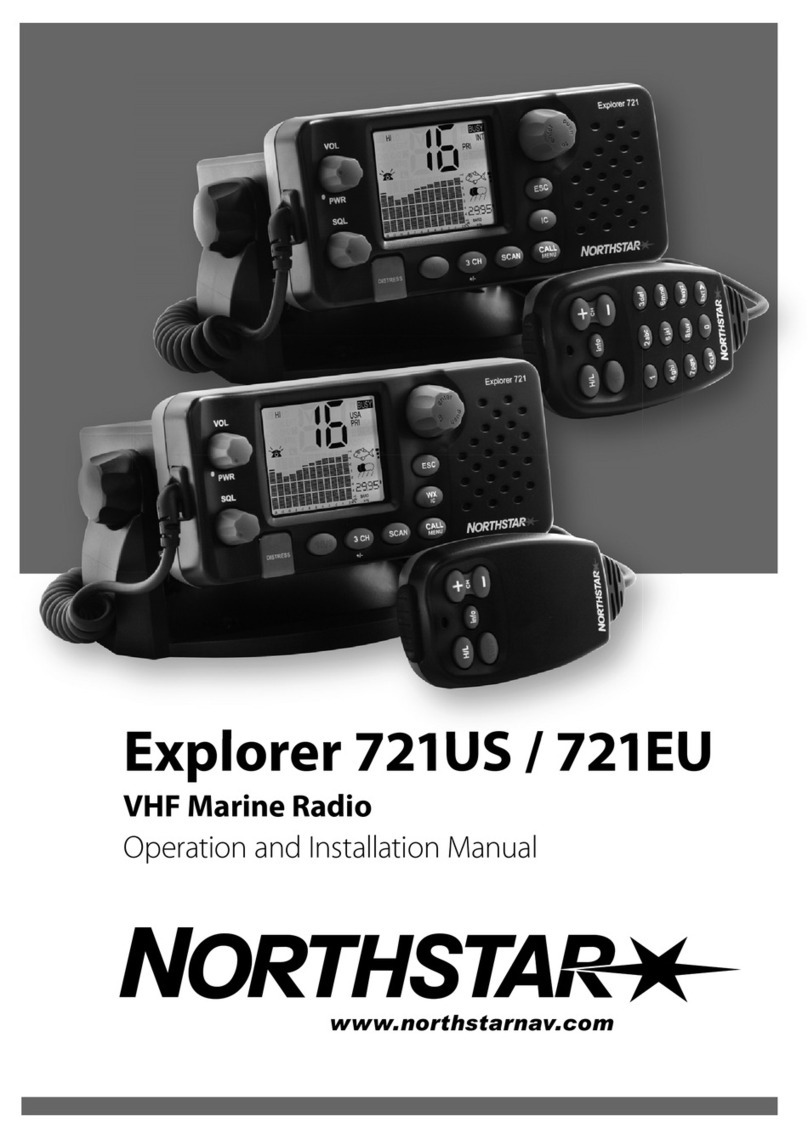
NorthStar
NorthStar VHF Marine Explorer 721EU Operation and installation manual
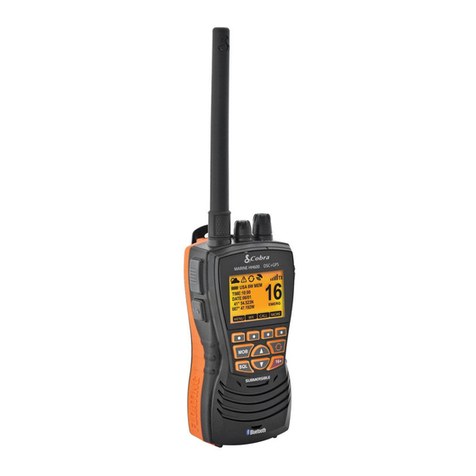
Cobra Marine
Cobra Marine MR HH600 FLT GPS BT owner's manual
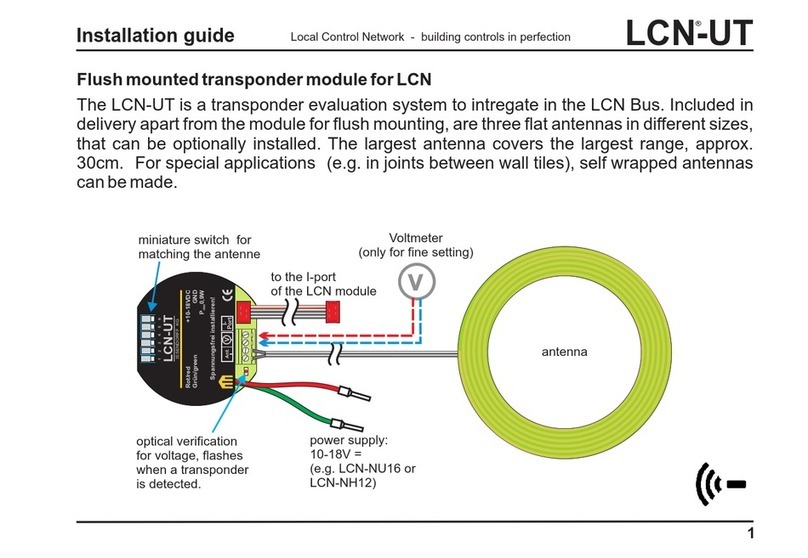
Issendorff
Issendorff LCN-UT installation guide
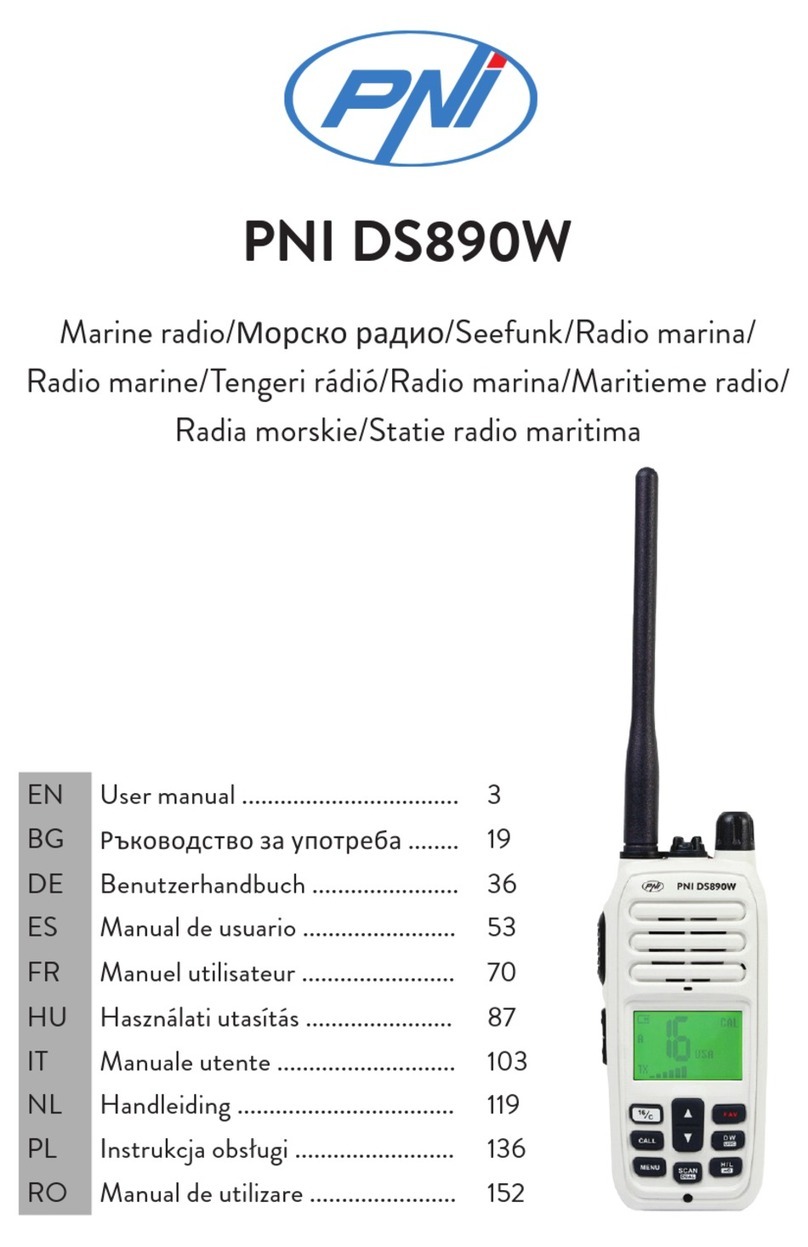
PNI
PNI DS890W user manual
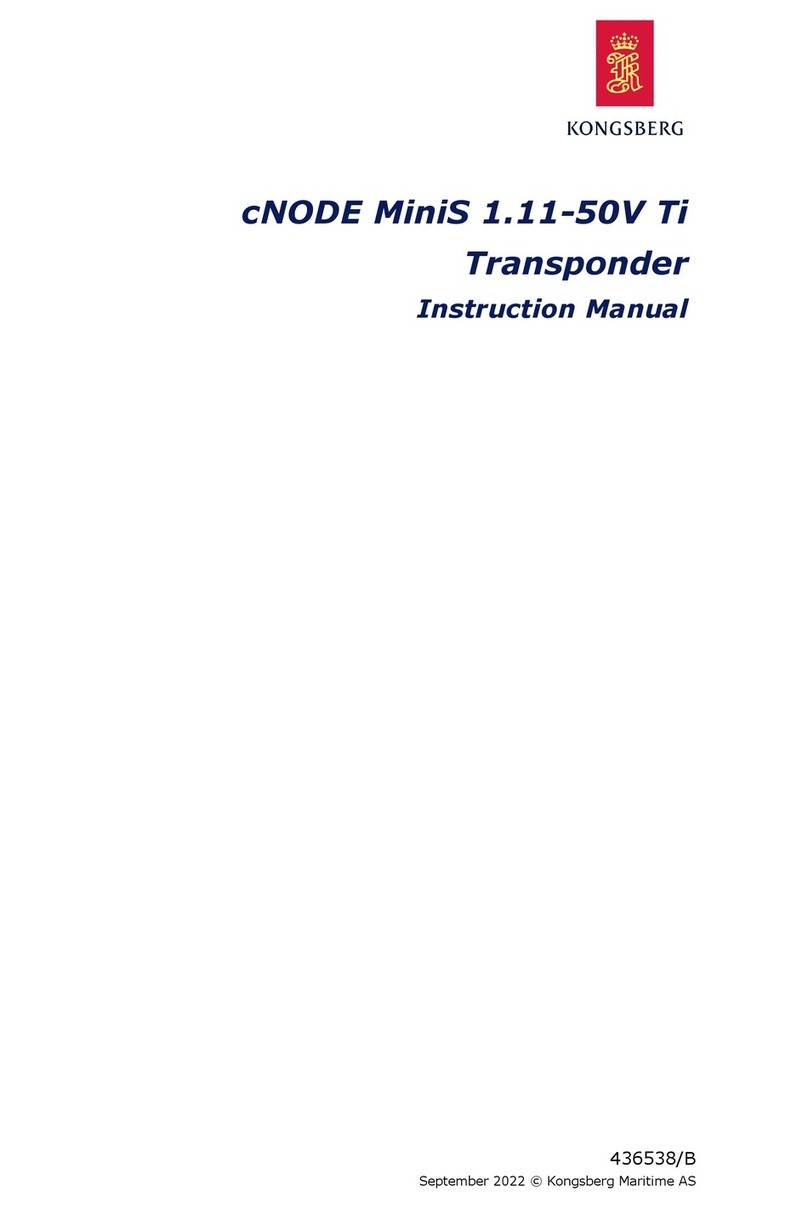
Kongsberg
Kongsberg cNODE MiniS 1.11-50V Ti instruction manual
